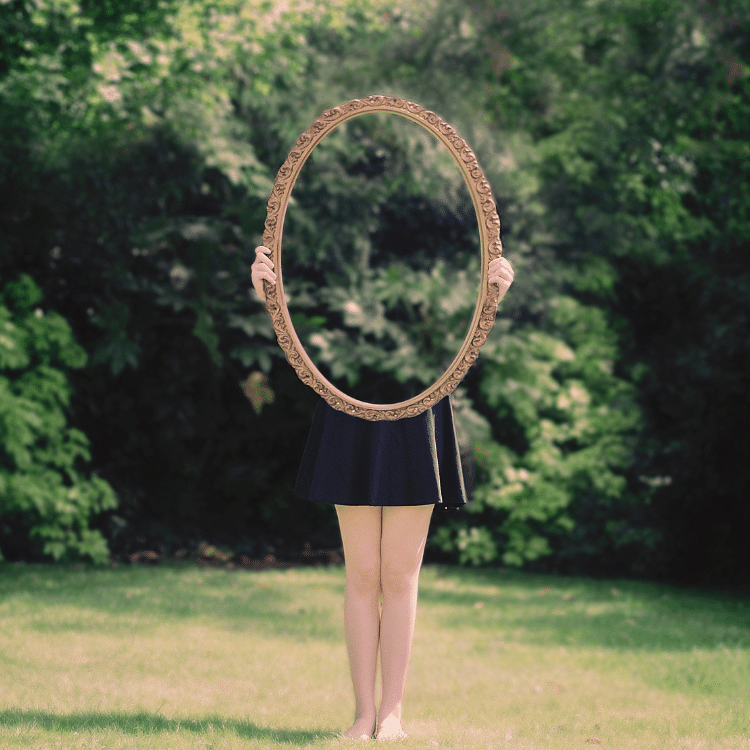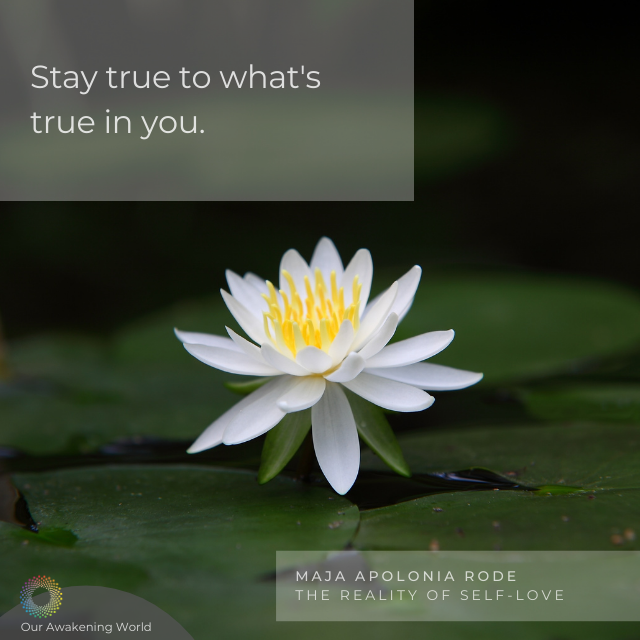What Is Beauty? Dissertation
book excerpt | 2300 words — a living inquiry for the mind and heart
Revisiting this tome 20 years later, I’m pleasantly surprised, actually. Feel free to skip the overly academic parts. I tried to keep it real. Enjoy!
Get the full 350-page PDF
Abstract
Statement of Intention
Preface
Chapter 1: An Invitation to Inquire
Contents
What Is Beauty?
A Living Inquiry for the Mind and Heart
A dissertation submitted in partial fulfillment of the requirements for the degree of
Doctor of Philosophy in Transpersonal Psychology
Institute of Transpersonal Psychology Palo Alto, California June 2000
Approved by:
Jill Mellick, Ph.D., Chairperson
Jennifer Clements, Ph.D., Committee Member
William Braud, Ph.D., Dissertation Director
Robert Schmitt, Ph.D., Academic Dean
Abstract
The essential focus of this dissertation is on beauty, while the intellectual focus is on the processes and outcomes of the inquiry into beauty. The reader is encouraged to engage in an active inquiry in order to discover a direct understanding and experience of beauty.
Methodologies:
Procedures followed organic and heuristic methodologies:
Six Caucasian women between the ages of 27 and 50 who expressed interest in beauty and spiritual understanding explored the question, “What is beauty?” For 2 weeks, each engaged in a self-directed, independent inquiry. Next, they inquired cooperatively in a weekend retreat through dialogues, time in nature, and creative work. From the participants’ journals, dialogues, and creative work, the primary researcher created an exhibit inviting viewers to directly engage in the inquiry.
Qualitative analysis of the journals and dialogues revealed 3 aspects of the inquiry experience: (a) process, (b) practice, and (c) transformation.
Process:
A model of the inquiry process was developed outlining 3 distinct perspectives and phases of beauty inquiry:
(a) the relative, mind-based phase which involves judging differences between objects,
(b) the absolute, heart-based phase which involves seeing the sameness or shared essential nature of objects in awareness, and
(c) the non-dual, being-based phase which is characterized by on-going self-remembrance.
Transformations:
Participant transformations included
(a) entering more fully into life,
(b) increased compassion for oneself,
(c) heightened capacity to observe the mind and its functioning, and
(d) greater awareness of beauty.
Practices:
The most transformational practices were
(a) inquiring, "What is beauty?"
(b) inquiring, "What is the difference between beauty and not-beauty?" and
(c) holding the possibility that beauty is available in every moment.
The research process and findings serve to bridge intellectual and spiritual modes of inquiry and support valuing beauty in a way that deepens and enlivens the human experience.
Statement of Intention
General Intention:
Let this dissertation be a true prayer for all to know the truth of peace, love, and freedom.
Specific intention:
Let those involved in this project, including you as the reader, experience beauty in all its manifestations more fully, deeply, and truthfully.
Let this work be a call to your awareness, to my awareness, to that which sees.
Let it be a call to see directly without ideas and judgments, to understand directly without hesitation, to know in this moment now the truth of beauty, the truth of being and not being, the timeless and everpresent Awareness before and beyond all that can be imagined, known, or in any way objectified.
Let this be a call to the subject of every seeing.
Let this subject — the “I” in all, the Self, first-person singular — let this subject know itself.
Preface
Tell me what to say,
but don’t say it with sound.
Say it with the movement of this pen,
with the desire to write, with
whatever happens
in the process of words appearing on a page
before your eyes.
Yes, you are the one, oh reader
of this message —
These words are written just for you.
You are beauty. That is all that needs to be told. That is all that matters in these three hundred pages, these three hundred times three hundred words. Only those three words matter.
Chapter 1: An Invitation to Inquire
How to Read this Dissertation
“If you, as an entity, want to make an intellectual study of this subject, don’t come to see me. Here it is you only; get in the test tube.” (Maharaj, 1985, p. 93)
In this dissertation, a great deal of intellectual, philosophical, and anecdotal material is presented. This information is simply—as the Sufi poet, Ghalib (trans. 1989) has said— “a pretext for meeting” (p. 104). Intellectually, we could say this is a book about beauty. Academically, we might say it is about conducting a research project. Spiritually, we could say it is about an inquiry into the truth. But, in truth, it is about you.
On a practical level, this work is an invitation for you to join me “in the test tube” and ask yourself, “What is beauty?” The value of this dissertation, therefore, is dependent on your direct participation. If your interest is solely a passive, intellectual seeking of information, I am sorry to say that you might find what you are looking for, and in this way, miss the essential point. There is no such thing as a true inquiry into beauty that is separate from you, which will somehow act upon you and benefit you or anyone else.
Why are you reading this dissertation? This is a very important question. I suspect you might fall into one of four categories of readers, depending on what drew you to begin reading: (a) you may be interested mainly in the topic of beauty, (b) you may be coming from a perspective of spiritual inquiry (recognizing “What is beauty?” to be a question that ultimately probes the nature of Self, God, or Reality), (c) you may be primarily interested in learning about the organic research methodology, or finally, (d) you might be involved in an academic sense as an advisor, editor, or the like.
Whatever your entry point, please take a moment to consider this: What is your true interest and curiosity here? It is through this doorway that I invite you to join me and the other participants in this project.
I have observed in working with others that the inquiry into beauty grows and evolves differently for everyone. As you read and reflect on this writing, I encourage you to let yourself be led by your own heart. If you do not know where to begin, I offer the following as a starting point:
As you read this dissertation, if there is a passage, metaphor, or insight that strikes you as beautiful, stop and notice. What is that? What is the beauty present in that metaphor, or in your experience of understanding? During your time away from reading, bring your attention to the beauty around you. Stop, and allow time to experience that beauty, and take it in more fully. Where did this beauty come from? Do you find instead that beauty seems absent? How do you know whether beauty is or is not there? What is your role or place in the face of beauty?
These questions are just examples of how the inquiry might grow. More important than the specific questions or lines of inquiry are the attitude and intention you hold. To those engaging in a process of inquiry, Macy and Rothberg (1994) advised, “Find a way in which you can be as deeply honest as possible” (p. 32).
There is no need to strive for answers. As you engage with the work presented here, simply hold the seed question, “What is beauty?” in your open mind and heart. Water it with the attention that springs from your sincerest curiosity.
"... when you have heard the answer, do not come to a conclusion; simply let it be in you. Be aware how the answer acts on you, how you react to the answer. Let there be space between the question and the answer and the new question." (Klein, 1994, p. 69)
In this dissertation, you will find various answers to various questions that arose during the course of exploration among the primary researcher and the 6 participants. You will also find ideas and wisdom expressed by researchers, psychologists, spiritual teachers, and philosophers throughout recorded history. What you read about might satisfy your “wanting to know,” but first know this: Intellectual understanding can be an important step toward deeper knowing, but it is—as the story of the blind men and the elephant (Shah, 1991) reminds us—a limited perspective. No amount of intellectual understanding can grasp the ultimate mystery, the simple self-evident truth, or any direct experience of beauty. Ideas are about the past. Beauty is now.
There is, however, the possibility of looking beyond words and concepts, to experience for yourself, to see directly, to be what this writing as a whole is pointing toward.
"So often we actually find ourselves trying to know rather than to be. And that’s very much like reading the ingredients on a recipe thinking it’s going to satisfy your hunger, rather than eating the food it’s intended to create." (Adyashanti, 1999a, side A)
I do not wish to imply here that this dissertation is somehow a recipe for beauty, in the sense that yoga, for example, is a set of instructions designed to lead the practitioner to a specific state of mind or realization. If there is a yoga here, it is simply the inquiry itself. I also do not wish to represent myself as a master of this inquiry. I do not possess some privileged knowledge of beauty that I am trying to impart to you. I am simply being as sincere as I know how to be in approaching this exploration of beauty.
In closing this section, I offer you some final words to keep in mind and heart as you read the offerings of myself and others on the pages that follow:
"Do not accept or reject what I have learned; neither response will be helpful. Rather, read with attention, and see if you can notice some quickening of recognition flicker within you. If you do, go there, go towards that flickering and quickening. That is the place of true learning for each of us." (Rabbin, 1998, p. 15)
Figure 3. This “Taste of Beauty” was recorded in two of the participants’ journals. Grace, a participant in the project, shared her homemade chocolates at the research retreat.
Opening the Circle
It is a Sunday afternoon in early Spring. Seven of us have gathered together at my home in the Santa Cruz mountains. The chill from the recent winter storms lingers in the misty air, and the mystical presence of redwood trees surrounds the orchards and the house. Nature provides a container for us as we begin our exploration of the question “What is Beauty?” The center of our circle is marked by a single white candle. Its light symbolizes the light radiating at the core and on the surface of everything that exists. Around the candle are scattered stones and crystals of many colors and varieties.
I begin by expressing my excitement about the upcoming time we will have together. I am honored, and a little nervous to be working with such a beautiful group of women. I am humbled, actually. I express my hope that this will be an opportunity for each of them to explore beauty in the way that they choose—in a way that will truly nourish them. I acknowledge their role as participants in my work of completing a dissertation, and also point out that ultimately the work they do will be offered to the readers of the final paper. After a few words are exchanged, it is time to open the circle.
This circle includes the seven of us who have gathered on this day. It also includes all those involved in this work, from the dissertation committee members to the readers, and anyone else who might be touched indirectly by their participation. The connective core of this circle is, as Parker Palmer (1998) calls it, “the power of the living subject” (p. 103). The living subject of our circle is Beauty, itself.
As a way to mark the beginning of the research group’s shared exploration, I ask each of us sitting in this circle to invite a quality or aspect of being into the circle. I also ask each of us to select a stone or crystal from the base of the candle and move it outward so as to create a larger, more conscious circle.
I begin by inviting “Acceptance.” I choose a clear quartz crystal and move it outward from the candle to begin a larger circle of stones.
Tia, to my left, follows by inviting “Self-Love.” She picks up a hematite stone and carefully places it on the larger circle beginning to take shape.
To Tia’s left sits Christine. After a moment of stillness, she chooses an amethyst and continues the circle with, “Remembrance and Open Heart.”
Next is Sophia. With a gentle sensitivity, she moves her hand over the stones and is drawn to the rose quartz, “A Heart as Wide as the Universe.”
Sitting to Sophia’s left is Joy. She quietly offers, “Breath,” and continues to build the circle of stones with a tiger eye.
Next to her sits Soledad who chooses the black onyx. She pauses for a moment before inviting the qualities of “Listening and Receiving.”
Finally, Grace, sitting to my right, completes the circle with a citrine quartz crystal. Her offering is one of “Expansion.”
And now, dear reader, I invite you to bring to mind and heart a quality that you would like to have present in your own exploration of beauty, a quality that you would like to offer to the larger circle of beauty inquiry. This circle includes, retrospectively, the seven of us gathered on that night:
Maja: Acceptance
Tia: Self-Love
Christine: Remembrance and Open Heart
Sophia: A Heart as Wide as the Universe
Joy: Breath Soledad: Listening and Receiving
Grace: Expansion
You: _____________________
Thank you. I’m very glad to have you here.
To continue reading, get the full 350-page PDF.
Contents
Chapter 1: An Invitation to Inquire
How to Read this Dissertation — 1
Opening the Circle — 5
Chapter 2: The Beauty Inquiry Exhibit
Introduction — 8
Collages — 10
Journal Entries — 17
Group Dialogues — 24
Exhibit Responses — 31
Chapter 3: Introduction to the Research
General Overview — 35
Three Ways of Seeing — 36
An Organic Approach to Beauty Research — 37
The Design of the Project — 39
Beauty and the Shadow — 40
The Story Behind This Work — 45
Chapter 4: Review of Literature
Beauty Research — 58
Theoretical Review — 65
Desacralization — 65
Inquiry — 67
Beauty, Science, and Education — 71
Beauty and Psychology — 74
Philosophical, Spiritual, and Cross-Cultural Perspectives — 81
Western Philosophical Overview — 82
Spiritual and Cross-cultural Overview — 87
Beyond Beauty — 91
Chapter 5: Methodology
Introduction to the Methodology — 93
Heuristic Research — 94
Organic Inquiry — 95
Other Methodologies — 98
Research Design Overview — 100
Validity — 101
Delimitations — 106
The Research Project Unfolding — 108
Selection of Participants — 108
The Beauty Inquiry Group — 111
Stage 1: Three-Hour Meeting — 112
Stage 2: Individual Inquiry — 114
Stage 3: Weekend Intensive Group Retreat — 116
Stage 4: Two-Week Rest Period — 123
Stage 5: Final Four-Hour Meeting — 123
Time for Deepening — 126
Working with the Data — 127
The Beauty Inquiry Exhibit — 127
Editing the Journals and Dialogues — 131
Verification of the Journals and Dialogues — 133
Generating the Results and Reflections — 134
Chapter 6: The Participants’ Beauty Inquiry
How to Read the Journals and Dialogues — 138
Setting the Circle — 139
Part 1: Journals — 142
Absolutely Free: Christine’s Journal — 142
Harmony Now: Soledad’s Journal — 150
The Inner Garden: Sophia’s Journal — 159
Border Lands: Joy’s Journal — 168
Life Grows Up: Tia’s Journal — 173
Pure Sun Underwater: Grace’s Journal — 183
Part 2: Dialogues — 196
Exploring the Question, “What is not beauty?” — 196
A Brief Exchange — 203
Relative and Absolute Beauty: Part 1 — 205
Relative and Absolute Beauty: Part 2 — 212
Human Beauty and Embodiment — 216
Mandala Reflections — 232
The Adventures of Buddha — 243
Sophia’s Dream — 246
Reflecting On the Inquiry — 251
Chapter 7: Results
Introduction — 258
The Characteristics of the Phases of Beauty Inquiry — 267
Key Questions and Experiments — 270
Beauty Inquiry Transformations — 274
Chapter 8: Reflections
From Experience to Transformation — 277
Buddha’s Message — 279
Reflections on the Model of Beauty Inquiry — 283
Reflections on the Research Design — 290
Future Research — 293
Limitations — 294
A Final Note — 296
References — 301
Appendices — 310
❤ 2000 | Maja Apolonia Rodé
You may also enjoy . . .
Free Upgrade
Get the 350-Page PDF
Get the full 350-page PDF of this dissertation with color images. You’ll also receive updates and inspiration via email from time to time. (You may cancel at any time.)
Tags
1MBC-039







program | 10-part series — on staying true to what’s true in you
Join me for in-depth dialogues with teachers of timeless wisdom as we explore the questions: What is self-love? Why does it matter? How do we cultivate a self-loving world starting with ourselves?